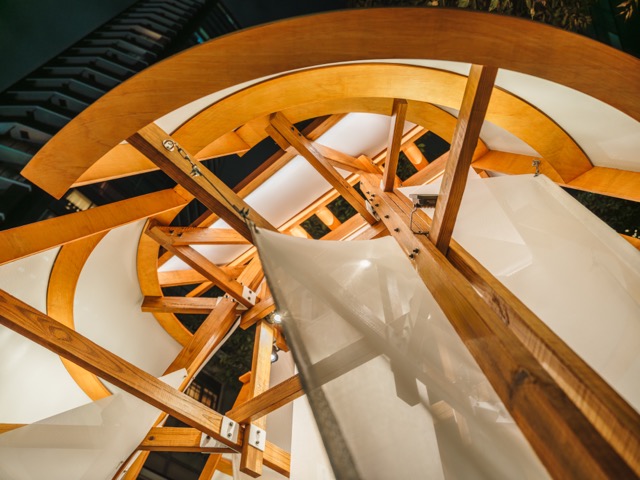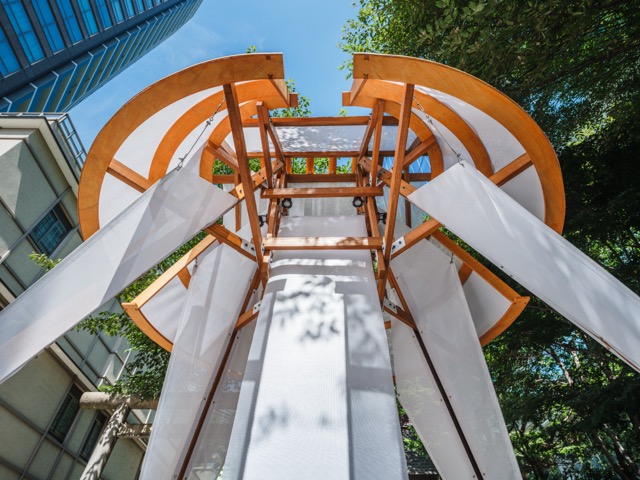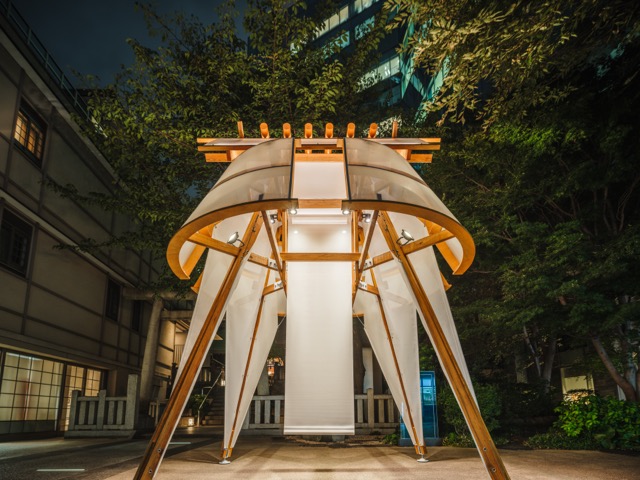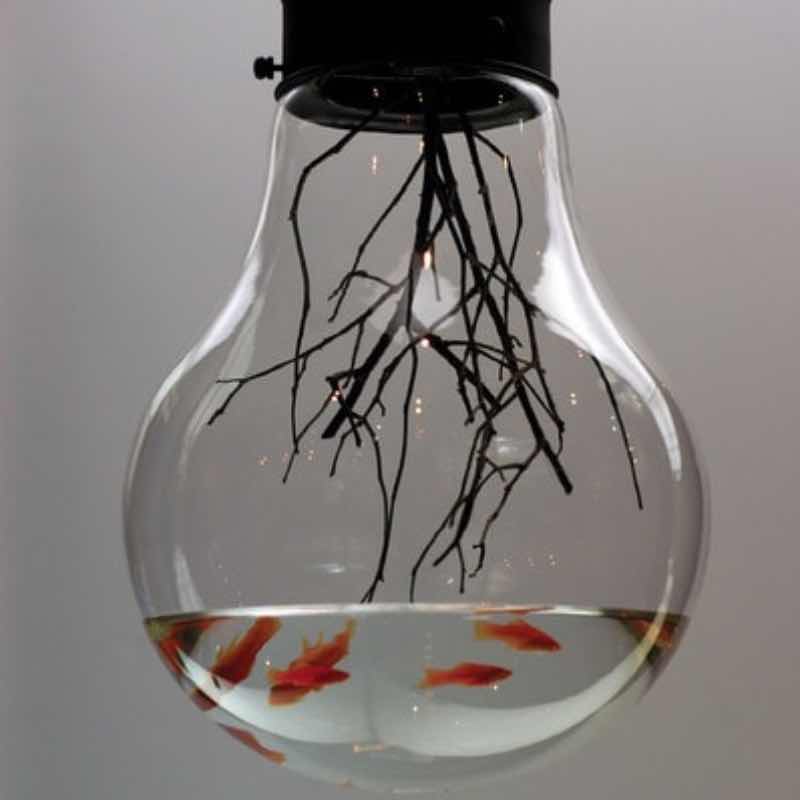
Feng’s ‘Sailing Castle’ Construct Is A Poetic Reflection Of Roppongi, Tokyo
In the heart of Tokyo’s Roppongi district, the skyline has transformed into something remarkable as an illuminated “Sailing Castle” appears to drift along the cityscape. At the historic Tenso Shrine, Taiwanese artist Cheng-Tsung Feng has unveiled a new site-specific installation, a vessel of light and wood, whose white sails and handcrafted structure capture the spirit and shapes of the city’s architectural landmarks.
As part of Roppongi Art Night 2025—one of Tokyo’s premier art festivals—Feng’s new Sailing Castle installation is the sixth in his ongoing series. Each piece in the series draws a poetic connection between urban skylines and a harbour filled with sails, using luminous forms to invite reflection and wonder.
For the Roppongi edition, Feng has crafted the silhouettes of iconic sites such as Tenso Shrine, The National Art Centre Tokyo, and Tokyo Midtown into a single wooden structure, merging the city’s memories with traditional artistry. The glowing installation stands as both a beacon and a bridge, carrying stories from the past into the modern landscape and inviting everyone to see their city in a new light.
More info: Instagram | Facebook | ChengTsungFENG
#1

Image Source: ChengTsungFENG
#2

Image Source: ChengTsungFENG
Since 2016, Feng has designed public art installations inspired by traditional craftsmanship and fading stories kept alive by artisans worldwide. He shared, “I see these vanishing stories as full of beauty and possibility, though they’re often hidden within objects that no longer fit our modern lives. Eventually, I began transforming those stories into installations and sculptures, giving these old traditions a new form and voice—so they can be shared again, in new ways, with new audiences”.
#3

Image Source: ChengTsungFENG
#4

Image Source: ChengTsungFENG
#5

Image Source: ChengTsungFENG
#6

Image Source: ChengTsungFENG
#7

Image Source: ChengTsungFENG
#8

Image Source: ChengTsungFENG
To Feng, his installations serve not only as artwork but also as vessels preserving collective memory and cultural heritage. “What’s most meaningful to me,” he said, “is that even after nearly a decade, the work remains in place—maintained and cared for by the local residents. It continues to quietly accompany the daily lives of the people there.”
His creative process often starts with everyday handmade objects, like the bamboo fishing traps of Taiwan’s Thao Tribe. By learning and adapting disappearing skills, Feng transforms functions—such as catching fish—into immersive environments that “catch” people’s curiosity.












Got wisdom to pour?